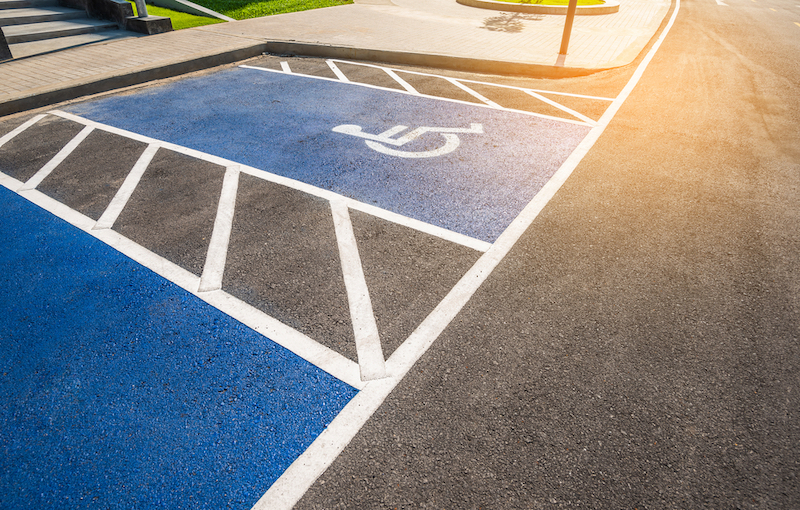ADA Compliance
Ensuring ADA Compliance for Your Parking Lot

M and K Enterprises helps your parking lot become ADA Compliance
For asphalt surfaces, ADA compliance includes features such as:
- Surface Smoothness: The asphalt surface should be smooth and free from significant cracks or potholes, ensuring easy mobility for people using mobility aids like wheelchairs or walkers.
- Slope and Cross Slope: The slope of the pavement (running along the length of the path) and cross slope (running across the width of the path) must meet specific ADA requirements to allow for comfortable and safe movement of individuals with disabilities.
- Curb Ramps: If there are curbs, ADA-compliant curb ramps must be installed to provide a smooth transition between the pavement and the curb, allowing wheelchair users to easily move onto and off the sidewalk or street.
- Detectable Warning Surfaces: Detectable warning surfaces, typically made of truncated domes, are required at the edges of paths and transit platforms. These surfaces provide tactile warnings to individuals with visual impairments, alerting them to potential hazards or intersections.
- Signage and Markings: ADA-compliant signage and markings, including proper placement and visibility, are essential to guide people with disabilities effectively.
- Parking Spaces: Accessible parking spaces must have appropriate dimensions, including the width of the parking space and the adjacent access aisle, allowing individuals with disabilities to enter and exit vehicles comfortably.
Ensuring that asphalt surfaces meet these criteria is vital for businesses, organizations, and public entities to provide equal access to all individuals, regardless of their abilities. Failure to comply with ADA regulations can result in legal consequences and barriers for people with disabilities.
There are various upgrades you can implement to ensure your building meets ADA standards.
One essential upgrade involves repairing sidewalks and parking lots by filling cracks and potholes, ensuring the safety of your customers and preventing injuries.
Additionally, it’s important to install curb ramps if they are not already in place. The space between your business and the parking lot must have ramps to accommodate everyone.
Facilitating easy entry into your building is a top priority for ADA. If your front door isn’t level with the ground, constructing a ramp is necessary. Many businesses opt for asphalt ramps due to their affordability and durability. With numerous ADA standards to consider, collaborating with a specialized contractor can make a significant difference.
